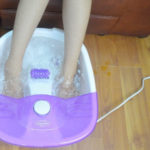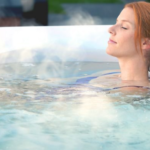1. Observe the soaking time
It is recommended to wait at least 1 hour after eating before soaking your feet. This allows the body to focus on digesting and absorbing nutrients without compromising blood circulation to the feet. Soaking your feet during this time may affect digestion and nutrient absorption.
Additionally, it is important to avoid soaking your feet for too long as it can negatively impact blood circulation to the heart and brain. The ideal foot bath time is 15-30 minutes. If soaking in the evening, it is recommended to soak for approximately 7 hours as this is when the kidneys efficiently remove toxins from the body.
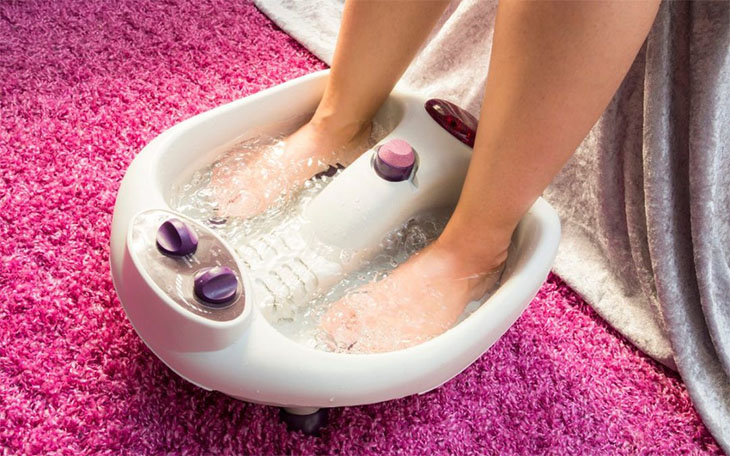
2. Number of soaks
Avoid using a foot bath more than twice a day. Soaking your feet once in the evening before bed can help improve sleep quality, relieve stress, fatigue, and discomfort after a long day, as well as enhance blood circulation and boost immunity. However, excessive foot soaking can cause saggy skin on the feet and negatively affect the vascular system and endocrine gland function.

3. Foot bath water temperature
The optimal water temperature for a foot bath is between 38 and 43 degrees Celsius, and it should not exceed 45 degrees Celsius. A high water temperature can damage the feet and expand the blood vessels, negatively affecting blood circulation. For elderly people with venous insufficiency, the foot bath temperature should be lower (around 20 degrees Celsius) to avoid the risk of varicose veins.

4. Levels of foot bath
When soaking your feet, it is recommended to soak up to the ankles (about 2 cm above the ankle). The ankle area contains many acupuncture points that can help improve overall blood circulation and meridian flow. It is important to maintain a moderate water level and avoid submerging the thighs. During use, do not add water; only adjust the water level during the preparation stage. Make sure to choose a cool room, avoid drafts, and have a dry towel prepared to prevent catching a cold.
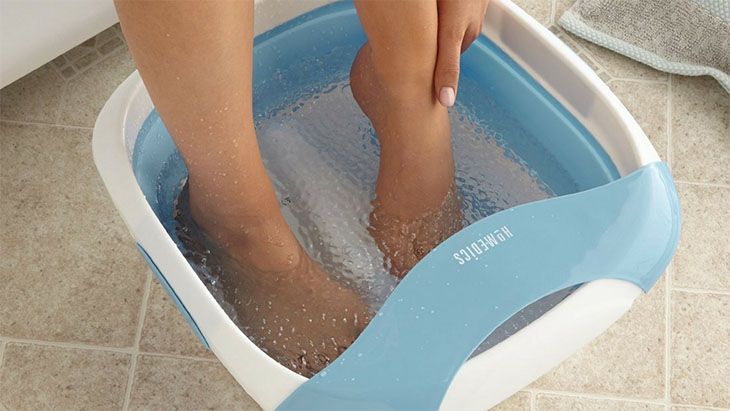
5. Ways to massage your feet while soaking your feet
Using a dedicated foot massage tub eliminates the need to manually find acupressure points and massage. The foot bath tub is equipped with large massage rollers that allow you to move your feet accordingly. Some foot baths also incorporate infrared lights for therapeutic purposes and have compartments for adding herbs or salts, enhancing the massage and relaxation effects compared to conventional methods.
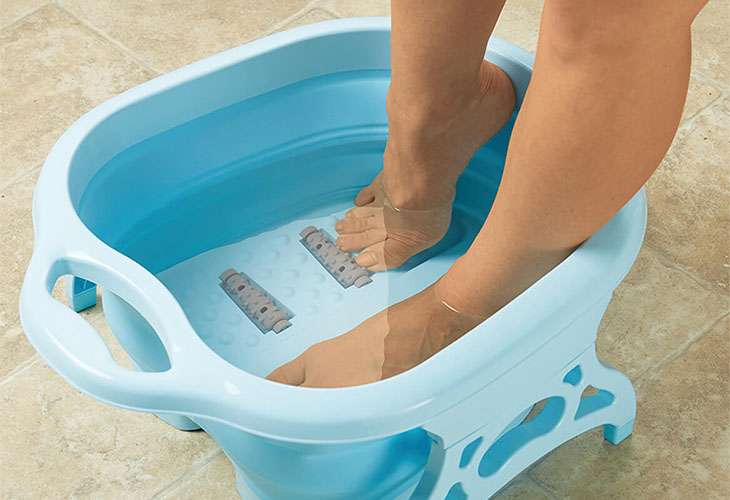
6. Recipes to prepare foot bath
In addition to reducing pain, fatigue, and detoxifying, soaking feet can effectively eliminate foot odor and aid in injury recovery. To enhance the effectiveness of foot baths, you can add a small amount of salt, ginger slices, or essential oils. These natural additives help eliminate toxins, stimulate kidney function, and leave the feet fragrant, whiter, and smoother. Avoid using harsh solutions such as acids, whitening agents, or baking soda to mix with water for foot soaking.
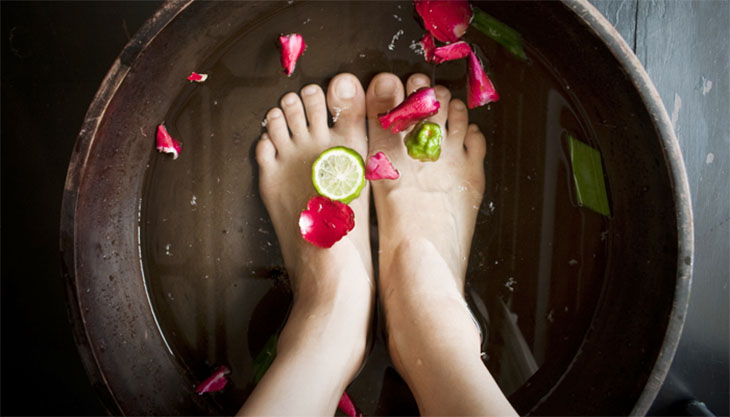
7. Who should not soak their feet?
- Pregnant women, especially in the second trimester, should refrain from foot soaking to prevent compression of pelvic veins and poor blood flow, leading to leg swelling.
- Individuals with diabetes should avoid foot baths as it may worsen foot complications, such as ulcers and necrosis.
- People with rheumatoid arthritis and arteriosclerosis should consider foot therapy carefully.
- Elderly individuals with varicose veins should limit foot baths to avoid further complications.
- Children should avoid soaking their feet in hot water as it can loosen ligaments and potentially affect leg growth and development, even leading to spinal deformities.
Remember to follow these guidelines for proper and effective foot bath usage. Take care!
What Are the Benefits of Soaking Your Feet in Hot Water?
Soaking your feet in hot water has been shown to have many surprising health benefits. Known popularly as a hot foot bath, this simple treatment can provide a myriad of advantages, from relieving stress to providing nutrient delivery. Let’s explore in detail the benefits of a hot foot bath and why your feet are often referred to as the “second heart” of the body.




























